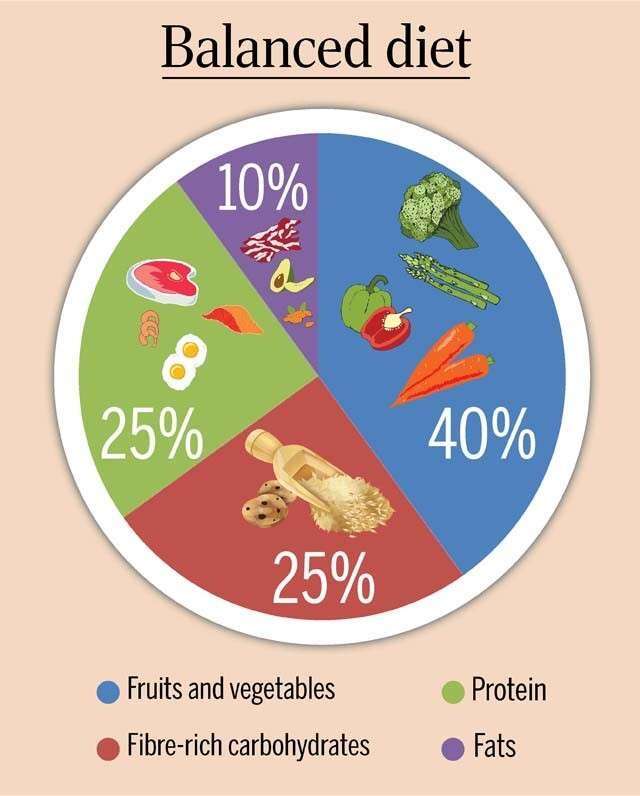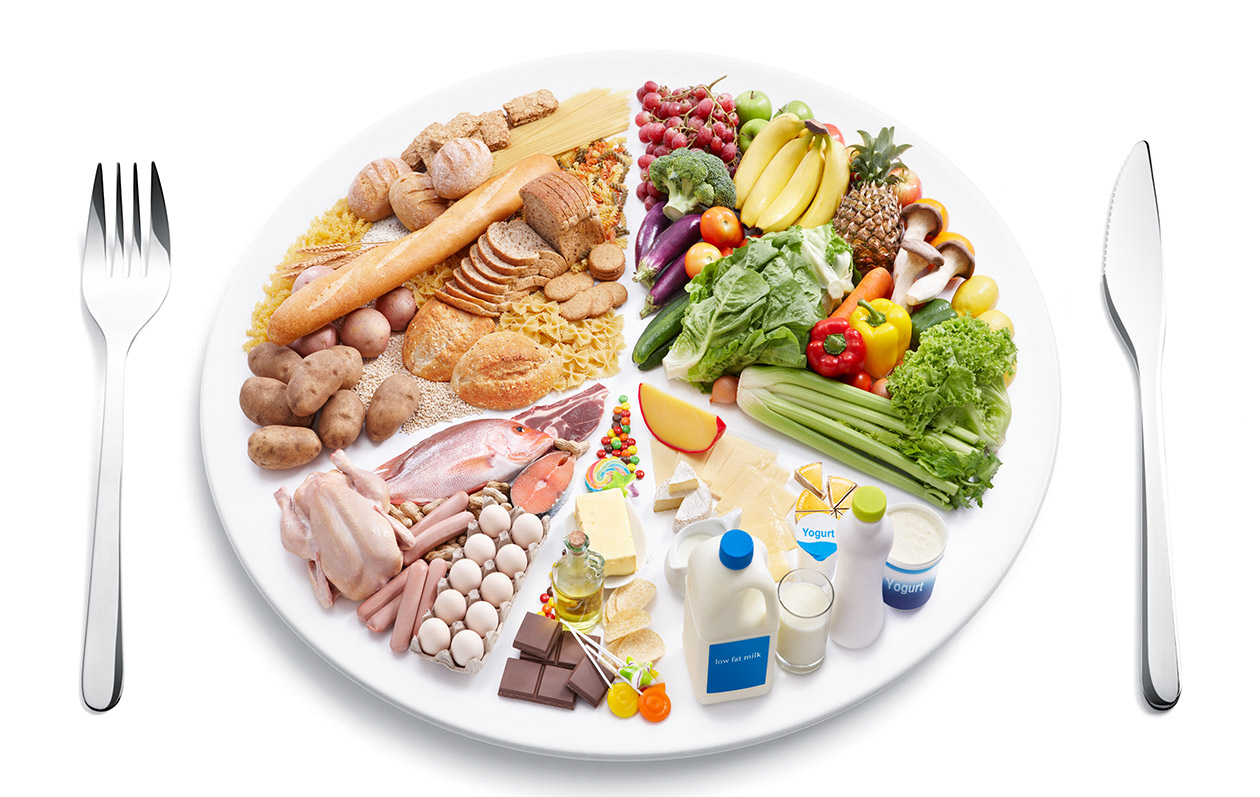A balanced diet doesn’t exclude any food groups, but it’s crucial to be informed about choices, especially when dealing with “energy-rich but nutrient-poor” options. There’s no universal diet as nutritional needs differ among individuals. The key is adopting a holistic approach, ensuring your diet embraces all essential food groups while minimizing intake of unhealthy elements. This personalized and well-rounded strategy is a solid foundation for a healthy lifestyle.
Definition
A balanced diet offers the body the right mix of nutrients for growth, health, and disease prevention. It meets energy needs, guards against deficiencies, and boosts immunity.
Why Is A Balanced Diet Important?
Eating a balanced diet keeps you healthy and feeling your best. For most people, diverse foods provide all the necessary nutrients without the need for additional supplements.
- Helps Control Weight: Fad diets come and go, but a balanced diet is the key to long-term weight control.
- Prevents Diseases and Infections: Safeguard yourself against chronic diseases and build a strong immune system with the vitamins and minerals in a balanced diet.
- Improves Your Mental Health: Studies suggest a link between diet and mental health, with a balanced diet promoting good mood and hormonal balance.
- Maintain Brain Health: Consistently following a balanced diet may protect against cognitive decline and dementia, thanks to essential nutrients like vitamin D, vitamin C, vitamin E, and omega-3 fatty acids.
Benefits Of Eating A Balanced Diet
A balanced meal supplies the body with essential nutrients for growth and repair.
Benefits of Healthy Eating for Adults:
- Boosts immunity
- Reduces the risk of Type 2 Diabetes, cardiovascular diseases, and some cancers
- Maintains a healthy weight
- Aids in quick recovery from diseases and trauma
Benefits of Healthy Eating for Children:
- Strengthens bones
- Supports brain development
- Boosts immunity
- Regulates growth functions
Balanced Diet Chart

A Balanced Vegetarian Diet Chart
With careful planning, a vegetarian diet can ensure daily requirements for nutrients such as calcium, iron, zinc, vitamin D, vitamin B12, healthy fats, and protein.
| Day | Meal |
|---|---|
| 1 | Breakfast: Oatmeal bowl with fruit slices Lunch: 1 cup of cooked brown rice with a bowl of dal, sabji, and salad Snacks: 1 cup buttermilk + 5 almonds + 3 walnuts/multigrain fat-free khakra with tomato onion salad as a topping. Dinner: 1 cup rajma + 1 cup cucumber raita + 2 chapati |
| 2 | Breakfast: 2 Idlis with vegetable sambar + green tea without sugar and milk Lunch: Low-fat paneer curry (3 pcs) + 2 roti or 1 bowl of rice + salad Snacks: 1 cup watermelon + 5 almonds + dark chocolate (about six small pieces or two large squares)/ sprouts salad. Dinner: 2 medium stuffed roti (vegetable/dal) + 1/2 bowl curd + salad |
| 3 | Breakfast: 1 bowl of poha + 1 glass fruit yogurt smoothie (without sugar) Lunch: Stir-fried vegetables with brown rice + roasted tofu Snacks: 1 glass buttermilk 1 cup chana chaat/mixed vegetable tikki with curd dip. Dinner: Stuffed eggplant + 1 cup cooked quinoa |
| 4 | Breakfast: 2 besan chilla + 1 cup sprouts salad Lunch: Vegetable rice with one bowl of soya curry Snacks: Steamed corn with black tea or coffee/ tossed green salad with cottage cheese/ sliced apple Dinner: Homemade vegetable burger with baked sweet potato fries |
| 5 | Breakfast: Upma with chutney + bowl of cut fruit. Lunch: 2 chapatis with a bowl of soya chunks curry + sabji + salad or 1 bowl of vegetable khichdi + 1/2 cup yogurt + sauteed soya chunks Snacks: Fruits salad/ Boiled chickpea salad Dinner: 1 cup quinoa with grilled veggies such as carrots, mushrooms, tomatoes, onions, broccoli and bell peppers |
| 6 | Breakfast: A glass of lemon water + 2 Uttapam with coconut chutney Lunch: A burrito bowl with brown rice, chickpea, salsa, flaxseeds, and other seasonings of your choice Snacks: Brown bread sandwich with paneer filling/ Unsweetened fruit smoothie Dinner: Bean soup with Greek yogurt |
| 7 | Breakfast: 2 medium-sized dosa with chutney + sambar Lunch: 2 whole wheat chapatis + mixed vegetables curry + grilled mushrooms or paneer Snacks: Tea with less sugar and milk + 2 digestive biscuits/ whole wheat toast + mixed fruits salad Dinner: Mixed vegetable rice with bean sprouts salad + tossed soya chunks |
Foods To Eat And Avoid In A Balanced Diet

Foods To Eat
- Vegetables: Include leafy greens, legumes or beans, starchy vegetables, and colorful veggies in your diet.
- Protein: Opt for skinless poultry, lean beef and pork, fish, beans, peas, and legumes as nutritious protein sources.
- Dairy and Alternatives: Choose low-fat dairy and soy products like ricotta, cottage cheese, yogurt, soy, or low-fat milk.
- Whole Grains: Incorporate healthful whole grains such as brown rice, quinoa, oats, barley, and buckwheat.
- Fruits: Enjoy fresh fruits, not just juices—apples, berries, bananas, stone fruits, kiwi, melons, pomegranates, and other seasonal favorites.
Foods To Avoid
- Processed foods
- Refined grains
- Alcohol
- Added sugar and salt
- Fatty cuts of red meat and processed meat
- Trans and saturated fats
- Packaged foods and beverages
Plate Method for Balance:
- Half Plate: Fruits and vegetables
- Over One Quarter: Grains
- Just Under One Quarter: Protein
- On the Side: Dairy or a non-dairy replacement





